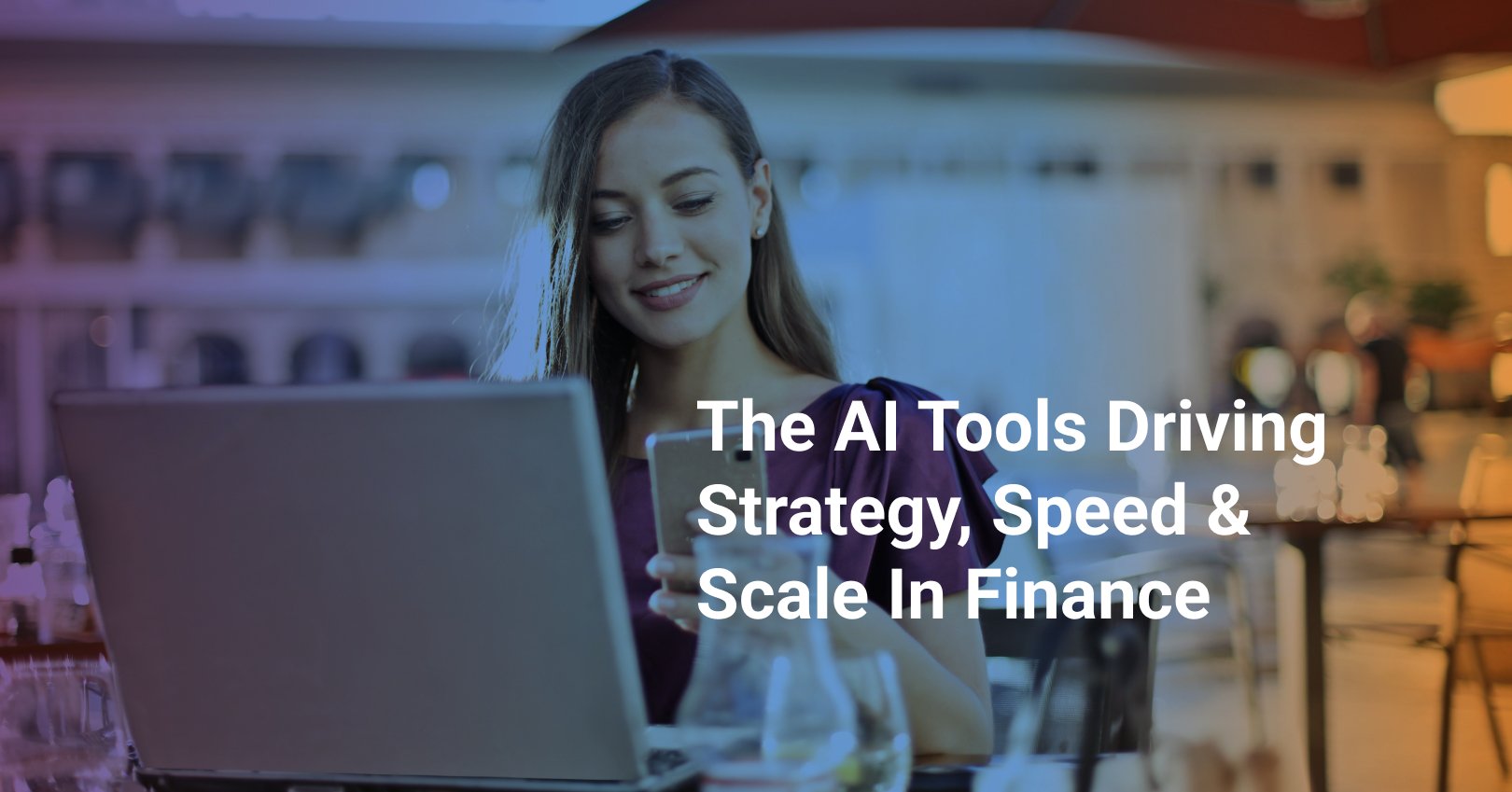The Strategic Role of Analytics Dashboards in Call Centers
When customers call, they want to be heard now, not wait. However, if there's no visibility into what's happening across queues, agents, and...

The days of finance teams stuck to crunching numbers are long gone. They are now responsible for driving strategy, speed, and scale. Their workloads are tied to rising expectations, which is where AI-driven tools become essential. They help them stay sharp, agile, and ahead of the curve.
We're going to go over the top-rated tools in this list that are helping modern finance teams automate their routines. These give you the competitive edge to make smarter decisions when it matters most.
Finance teams are getting their nights and weekends back. Tasks that used to eat up entire afternoons now happen in minutes. It’s common to see accounting departments cut their month-end close from two weeks to three days just by letting AI handle invoice matching and reconciliation. The software reads invoices, pulls the important stuff, and sends everything to the right people for approval.
The really interesting part is how AI spots problems before they blow up. Your cash flow software notices that a big client always pays 15 days late and adjusts your projections. It catches that expense report where someone accidentally submitted the same receipt twice. Hence, finance teams can actually focus on strategy instead of double-checking spreadsheets all day.
AI-driven tools are helping financial teams focus on what matters most: priority cases that demand their specialized skills and knowledge. The integrated automation preps data on its own, forecasts trends, detects patterns, and collaborates with teams to crunch strategic insights.
|
Best For |
Solution Type |
Target Audience |
Key AI Features |
|
Voice/chat automation for finance workflows |
Conversational AI & analytics platform |
Credit unions, enterprise finance |
Sentiment-aware IVAs, proactive outreach, real-time analytics |
Mosaicx is a conversational AI platform that helps finance teams simplify everyday interactions. Its AI voice + chat tools work around the clock, handling large volumes without losing the human touch.
Even better, you don't need multiple tools. A single dashboard brings everything together, allowing your team to stay organized while responding faster. Hence, less manual work, more consistent service, and smarter decisions backed by real-time insights.
|
Best For |
Solution Type |
Target Audience |
Key AI Features |
|
Automated FP&A & executive reporting |
FP&A platform |
Mid-market, Enterprise |
Predictive forecasting, variance & trend insights |
Datarails is an FP&A tool for Excel users that automates data consolidation, reporting, and forecasting. Its AI suite “Insights by Genius” proactively surfaces opportunities and risks, delivering variance explanations, trend detection, and predictive analytics without digging through spreadsheets.
|
Best For |
Solution Type |
Target Audience |
Key AI Features |
|
Collaborative budgeting & analysis |
FP&A + Excel-native platform |
SMB to Enterprise |
Agentic AI Copilot; scenario modeling |
Vena combines Excel familiarity with powerful AI for planning and analysis. Its Copilot for Teams acts as a virtual analyst, placing agentic AI inside Teams and Excel to generate reports, run variance analysis, simulate scenarios, and answer questions in natural language.
|
Best For |
Solution Type |
Target Audience |
Key AI Features |
|
Automated financial planning & close |
Corporate Performance platform |
Mid-market, Enterprise |
Predictive forecasting, AI-powered transaction matching & insights |
Prophix handles the forecasting and budgeting work that usually keeps finance teams busy for weeks. You feed it your data, and it builds your reports and consolidates everything automatically. The AI part, called Prophix One Intelligence, looks at your numbers and predicts what's coming next. It also writes explanations of what's happening with your finances in plain English.
The Copilot feature is pretty handy. It takes those confusing charts and graphs and tells you what they actually mean. Instead of staring at a spreadsheet wondering why Q3 revenue dipped, you get a simple explanation of the trends and what might be causing them.
|
Best For |
Solution Type |
Target Audience |
Key AI Features |
|
Continuous planning & scenario modeling |
FP&A platform |
Mid-market, Enterprise |
What-if scenario analysis; AI-powered help assistant |
Planful empowers finance teams to speed up forecasts, model multiple scenarios, and deliver strategic insights. Its AI-driven help assistant guides users within the platform, providing contextual suggestions and workflow support.
|
Best For |
Solution Type |
Target Audience |
Key AI Features |
|
Risk, compliance, and fraud automation |
AI risk & compliance suite |
Banks, credit unions, and insurers |
Fraud detection, compliance APIs, predictive risk |
Arya.ai offers AI tools specifically designed for risk and compliance in financial sectors, including fraud detection, AML/KYC workflows, and document verification APIs. Its modular architecture supports enhanced due diligence, identity verification, and monitoring, making regulatory demands manageable and automated.
|
Best For |
Solution Type |
Target Audience |
Key AI Features |
|
Accounting automation & compliance support |
AI accounting platform |
Controllers, auditors, and finance teams |
Data extraction, agentic AI chatbot, automated validations |
Trullion is an AI-driven finance assistant designed for accounting teams. It automates financial statement validation, audit prep, revenue recognition, and lease accounting. Its Trulli chatbot provides live Q&A, reconciliation, data extraction, and anomaly detection, allowing finance professionals to concentrate on strategic analysis.
|
Best For |
Solution Type |
Target Audience |
Key AI Features |
|
AP automation and invoice workflows |
AP automation |
Mid-market, Enterprise |
AI-powered invoice capture & coding, workflow collaboration |
Stampli takes care of all the invoice headaches that slow down your accounts payable team. It grabs invoices from emails, scans them, figures out the GL codes, and sends them through your approval process without anyone touching them.
The AI assistant they call Billy the Bot reads invoices in any format and pulls out the vendor name, amount, and other details you need. Billy learns how your company does things and gets better at handling your specific vendors and processes. What used to take your AP clerk two hours now happens in five minutes.
|
Best For |
Solution Type |
Target Audience |
Key AI Features |
|
Autonomous invoice processing & spend management |
AP automation |
CFOs, Controllers, AP teams |
Template-free OCR; line-item extraction with confidence scoring, autopilot approvals |
Vic.ai’s APSuite automates end-to-end invoice processing with template-free data extraction, intelligent PO matching, dynamic approval routing, and built-in analytics. By leveraging AI trained on over a billion invoices, it delivers up to 80% faster invoice processing, 99% accuracy, and auto-approvals with minimal human oversight.
|
Best For |
Solution Type |
Target Audience |
Key AI Features |
|
FP&A automation, modeling, and analysis |
FP&A platform |
SMB to Enterprise |
Conversational agents (chat-based Q&A) & AI insights grounded in data |
Cube is a no-code FP&A platform that connects spreadsheets, systems, and teams. Its Agentic AI mirrors finance workflows, offering conversational Q&A, real-time variance detection, and auto-generated forecasts and scenario models. It’s designed for finance teams seeking strategic impact without disrupting current spreadsheet-based processes.
AI is reshaping financial operations by automating complex tasks, improving accuracy, and enabling better decision-making. Below are key use cases, along with real-world tools.
Finance teams rely on AI-driven tools to accurately forecast trends and numbers based on historical records. For instance, Workday Adaptive Planning uses machine learning to improve financial forecasts and adjust plans dynamically based on new data.
Financial close becomes faster and accurate via AI tools. The system can automatically identify errors before they end up creating bottlenecks down the line. BlackLine, as one example use case, uses AI to monitor account balances with great accuracy to speed up the close process.
AI improves compliance by monitoring transactions, automating audit trails, and identifying regulatory risks early. SymphonyAI helps financial institutions with AI-powered Anti-Money Laundering (AML) solutions.
AI can flag suspicious transactions in real time, reducing fraudulent attempts and false positives. Feedzai uses machine learning to analyze billions of data points per year to detect and prevent fraud at scale.
You must always start by making a list of what your team actually needs. Confirm which tasks eat up the most time. These will be your prime targets for automation.
Consider your operational scale as well. A five-person accounting department needs different tools from a 50-person finance organization.
Check integration requirements. Your AI tool must connect with your existing software. Ask vendors for a complete list of supported integrations, and test the connections during trial periods. Broken data flows create more problems than manual processes.
Focus on specific AI capabilities that match your workflow:
Most importantly, request case studies from your vendor to confirm their track records. Check review sites for the most common issues other finance teams have had with the vendor. The goal here is to confirm that the vendor has successfully managed to address your problems with another team.
Also, test support quality before signing contracts. Submit a technical question during your trial period. Time the response. Ask complex questions that require actual expertise, not scripted answers. Poor support means costly delays when issues arise.
Demand transparent pricing structures. Avoid vendors who won't provide clear per-user costs or hide fees in fine print. Ask about charges for data storage, additional integrations, or premium features. Get renewal pricing in writing.
Run pilot programs with real data. Use your actual invoices, expenses, and financial documents during trials. Generic demo data won't reveal how the AI handles your specific formats, vendors, or approval workflows.
Verify security and compliance standards. Confirm the vendor meets your industry requirements, like SOC 2, PCI DSS, or GDPR. Ask about data encryption, backup procedures, and incident response plans. Financial data breaches carry severe penalties.
Finance teams using AI tools complete their work faster and with fewer errors than those still doing everything manually. Invoice processing that once took hours now happens in minutes. Month-end closes that stretched across weeks finish in days.
Your competitors are already using these tools to free up their staff for analysis and strategy instead of data entry and reconciliation.
Pick one pain point in your finance operations and test an AI solution for it. Start with invoice processing if your AP team is drowning in paperwork. Try expense management software if receipt categorization wastes hours each week. Test forecasting tools if budget preparation consumes entire quarters.
Run pilots with your actual data, not demo samples. The right tool should solve your specific problems without creating new complications.
.png)
When customers call, they want to be heard now, not wait. However, if there's no visibility into what's happening across queues, agents, and...

Every call is another opportunity for contact centers to gather important data on their customers. That data can reveal preferences, where customers...

Enterprises can't afford to manage their customer conversations with tools that were never designed for scale. One bad interaction is all it takes to...